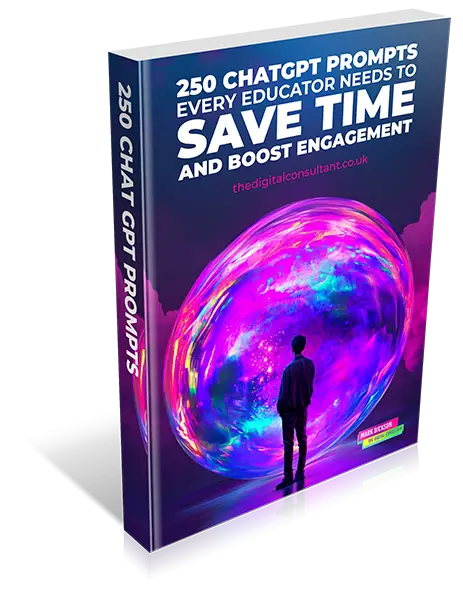Unlocking Deeper Thinking and Engagement in the Classroom
Effective questioning sits at the heart of great teaching. It helps you check understanding, promote deeper thinking, and engage students in meaningful discussions. Well-crafted questions transform passive learning into active exploration, developing curiosity and critical thinking skills in your students.
Types of Questions and How to Use Them
1. Open vs Closed Questions
- Closed Questions ask for a specific answer (e.g., “What year did World War II begin?”). They are useful for quick checks of factual knowledge.
- Open Questions encourage deeper thinking (e.g., “Why do you think World War II started?”). They are ideal for promoting discussion and critical thinking.
How to Build This Into Your Lesson Routine
- Start every lesson with three open questions on the board to introduce key ideas.
- Use closed questions mid-lesson to check understanding of factual points before moving on.
- End the lesson with a big open question that promotes reflection and leaves students with something to ponder.
This approach keeps your questioning purposeful and makes it easier to include both factual checks and deeper thinking without extra prep time.
2. Higher-Order Thinking Questions (Using Bloom’s Taxonomy)
Move students beyond simple recall by using questions at different levels:
- Remembering: “What are the key features of a Gothic novel?”
- Understanding: “How would you summarise the main argument of this article?”
- Applying: “How would you use this formula to solve a real-world problem?”
- Analysing: “What are the similarities and differences between these two political ideologies?”
- Evaluating: “Which historical leader had the greatest impact, and why?”
- Creating: “How would you design an experiment to test this hypothesis?”
Quick Planning Tip
You don’t need a list of complicated question stems. Here’s a simple planning structure you can use during lesson prep:
- Step 1: Write down one open question that captures the key learning point.
- Step 2: Add one follow-up probing question you could ask after the first answer.
- Step 3: Plan one linking question that connects this lesson to previous knowledge or a real-world application.
This simple three-question habit ensures variety and depth without adding extra planning time.
3. Probing and Follow-Up Questions
Encourage students to expand on their answers:
- “Can you explain that in more detail?”
- “What evidence supports your view?”
- “How does that connect to what we learned last week?”
How to Embed This in Your Lessons
- Use a “minimum two follow-ups” rule: after a student answers, always ask at least two further questions to deepen the discussion.
- Try ‘think aloud’ modelling: show students how you build deeper answers by thinking out loud before asking them to try it themselves.
4. Wait Time and Pacing
Allowing 3 to 5 seconds of thinking time improves the quality of responses. Give students enough time to process before answering.
5. No Hands-Up Approach
One of the easiest tweaks I see in almost every lesson visit that has an immediate impact is targeting questions rather than waiting for volunteers. I always ask myself:
- Why am I asking this question?
- What do I want to find out?
- What will I do with the answer?
Are you checking understanding, challenging attitudes, or deepening learning? Asking these questions before you even speak ensures that questioning drives learning forward, not just fills time.
Engage all students by using:
- Cold Calling: Choose students at random (supportively).
- Think-Pair-Share: Let students discuss in pairs before answering.
- Mini Whiteboards: Use them for quick, whole-class feedback.
6. Socratic Questioning
Challenge assumptions and deepen thinking:
- “Why do you think that’s true?”
- “What could be an alternative explanation?”
- “Is there any evidence that contradicts that idea?”
7. Checking for Understanding
Check comprehension during the lesson:
- “What was the key takeaway from this discussion?”
- “Can you explain this concept in your own words?”
- “What’s one thing you’re still unsure about?”
Planning Effective Questions
When planning, think about the purpose behind each question. Here are examples you can use:
| Purpose | Example Questions |
|---|---|
| To prompt reflection | “What is the most important idea from today’s discussion?” |
| To clarify vague comments | “Could you say a bit more on that point?” |
| To explore attitudes or values | “What beliefs influence your view on this topic?” |
| To consider other perspectives | “How might someone who disagrees view this issue?” |
| To support arguments with evidence | “How do you know that? What’s the evidence?” |
| To encourage peer responses | “Do you agree with your classmate? Why or why not?” |
| To deepen thinking | “What assumptions are behind your thinking?” |
| To predict outcomes | “What might happen if…?” |
| To connect and organise information | “How does this link to what we studied last week?” |
| To apply knowledge | “How could this principle apply here?” |
| To illustrate with examples | “Can you give a real-world example of this idea?” |
Common Pitfalls to Avoid
- Leading Questions: Avoid suggesting the answer. Use neutral phrasing.
- Rushing Thinking Time: Give students space to think before answering.
- Accepting the First Answer Only: Always follow up to deepen the response.
- Relying on the Same Students: Use strategies to engage the whole class.
Take Your Teacher Questioning Skills to the Next Level
Great questioning is about helping students think more deeply, not just checking what they know. Use a variety of strategies, allow more thinking time, and encourage meaningful responses.
Quick Wins for Tomorrow:
- Replace a closed question with an open one.
- Increase wait time after asking a question.
- Ask a follow-up question to extend a student’s answer.
- Try the three-question planning habit.
- End your lesson with an open reflection question to promote lasting thinking.
Want the Research? Start With These Evidence-Based Resources
Education Endowment Foundation (n.d.) Feedback. Available at: https://educationendowmentfoundation.org.uk/education-evidence/teaching-learning-toolkit/feedback
Rowe, M.B. (1974) ‘Wait-time and rewards as instructional variables, their influence on language, logic, and fate control’, Journal of Research in Science Teaching, 11(2), pp. 81–94. Available at: https://eric.ed.gov/?id=ED111682
University of Tennessee (2020) Using Bloom’s Taxonomy to write effective learning objectives. Available at: https://teaching.utk.edu/wp-content/uploads/2020/11/Blooms-Taxonomy-Handout.pdf
Vanderbilt University, Center for Teaching (n.d.) Socratic questioning. Available at: https://cft.vanderbilt.edu/guides-sub-pages/socratic-questioning/
Lemov, D. (2020) ‘Why Cold Call is even more important now’, Teach Like a Champion. Available at: https://teachlikeachampion.org/blog/why-cold-call-is-even-more-important-now/
Chin, C. (2007) ‘Teacher questioning in science classrooms: approaches that stimulate productive thinking’, Journal of Research in Science Teaching, 44(6), pp. 815–843. Available at: https://onlinelibrary.wiley.com/doi/abs/10.1002/tea.20171






